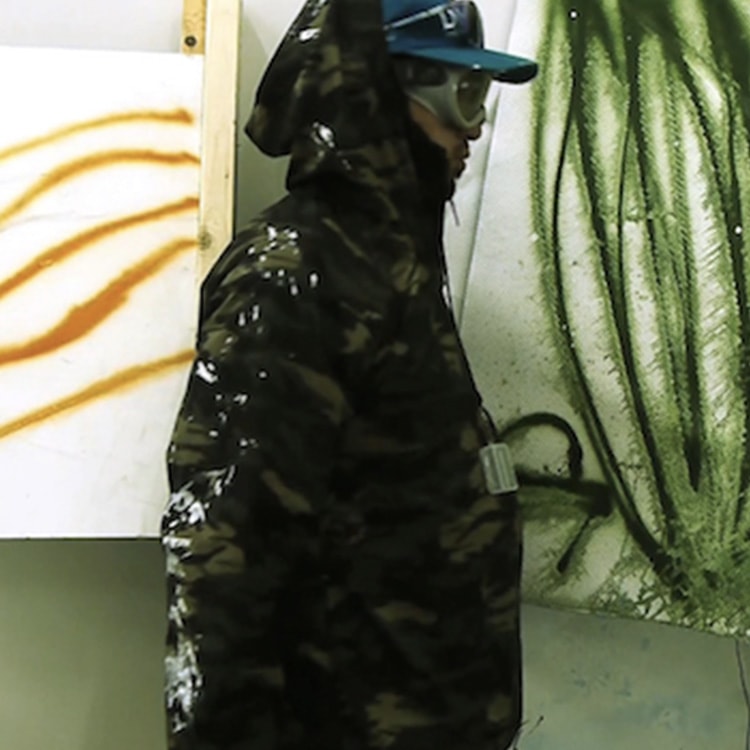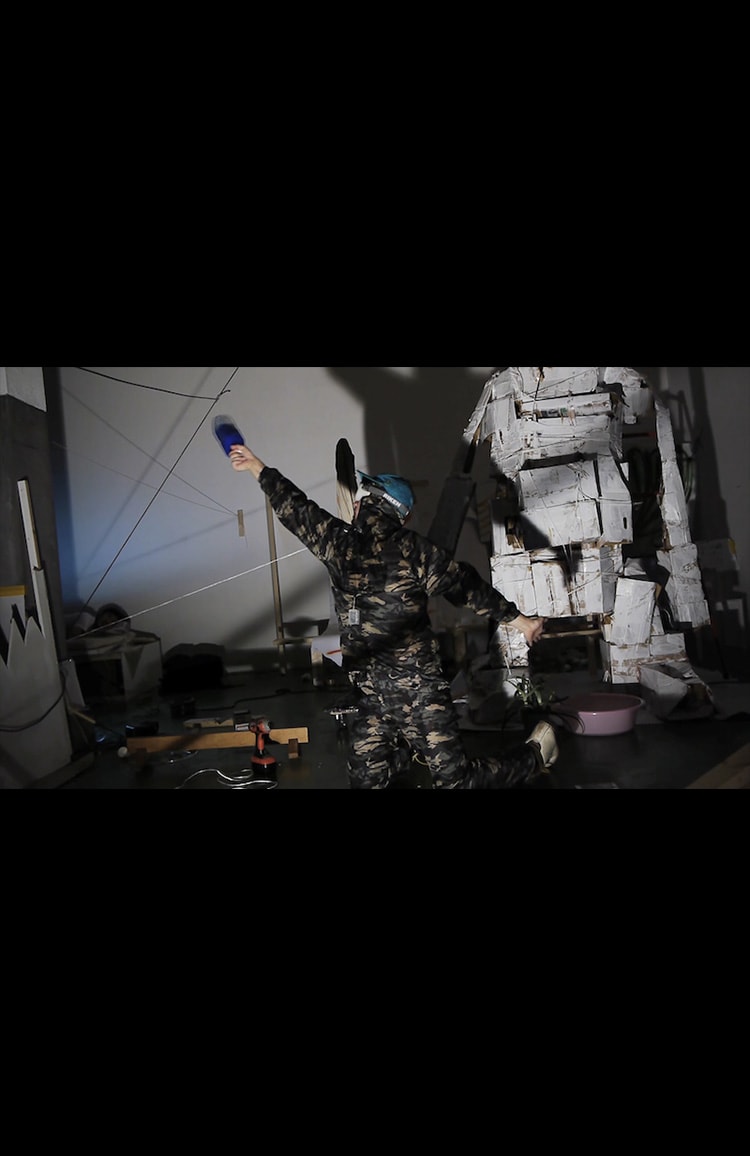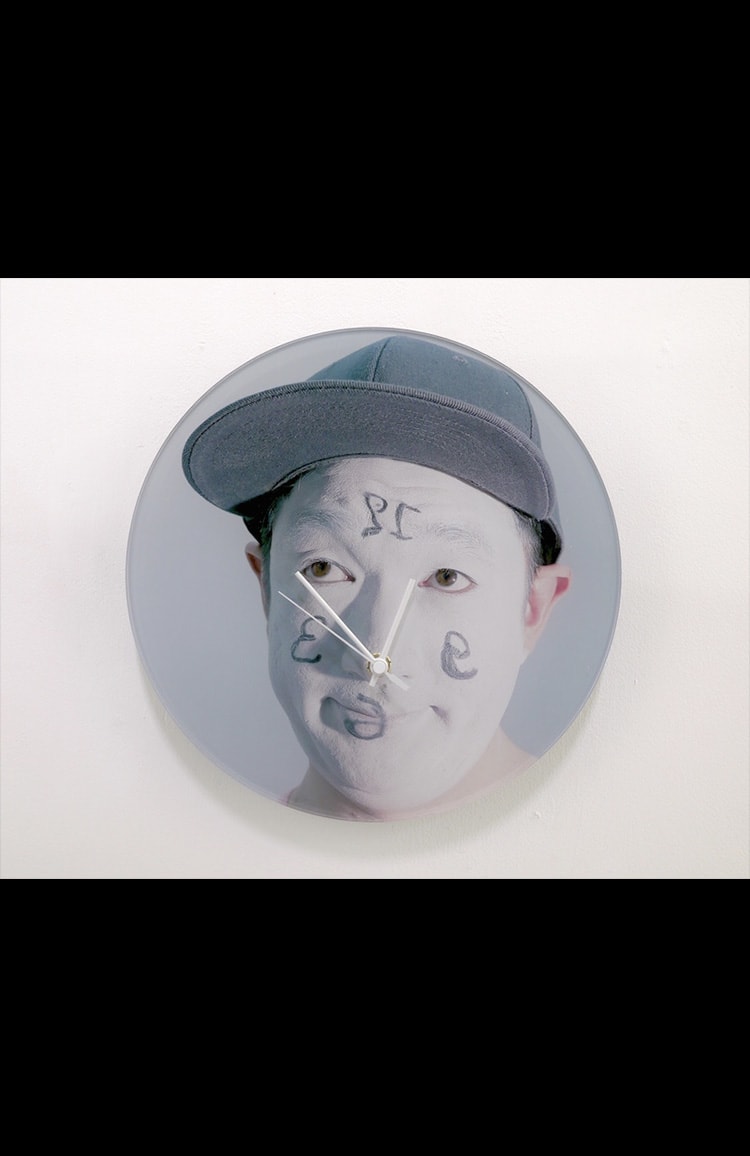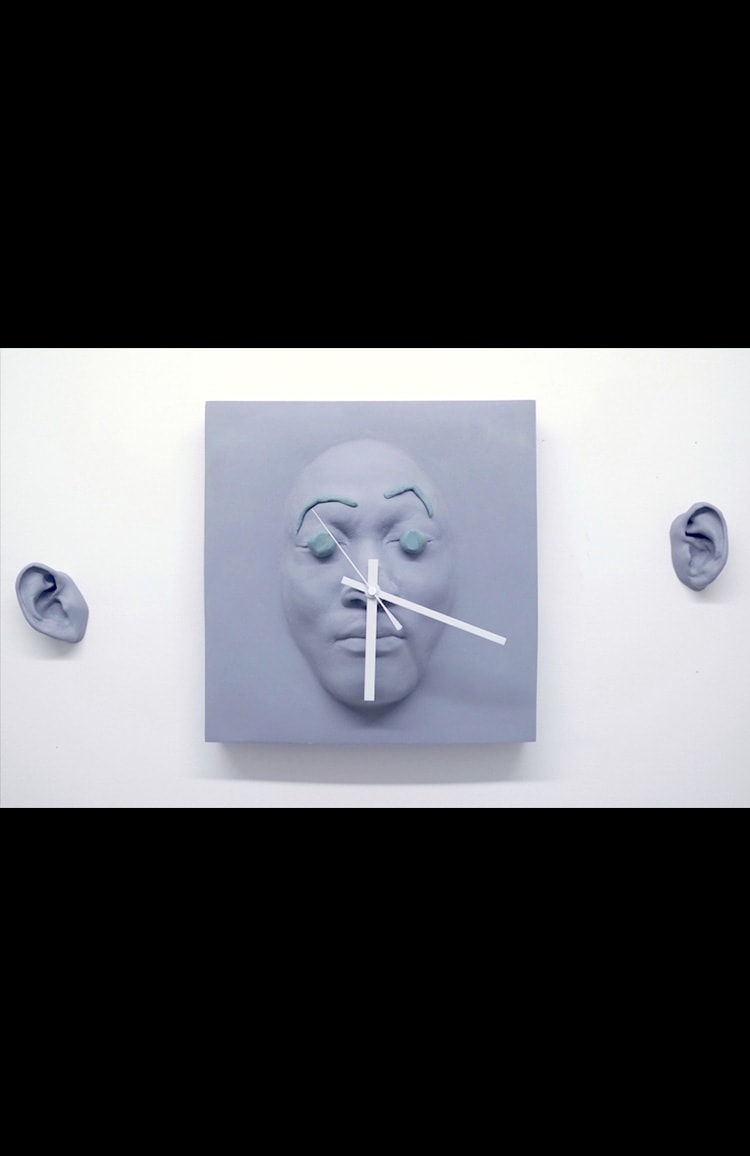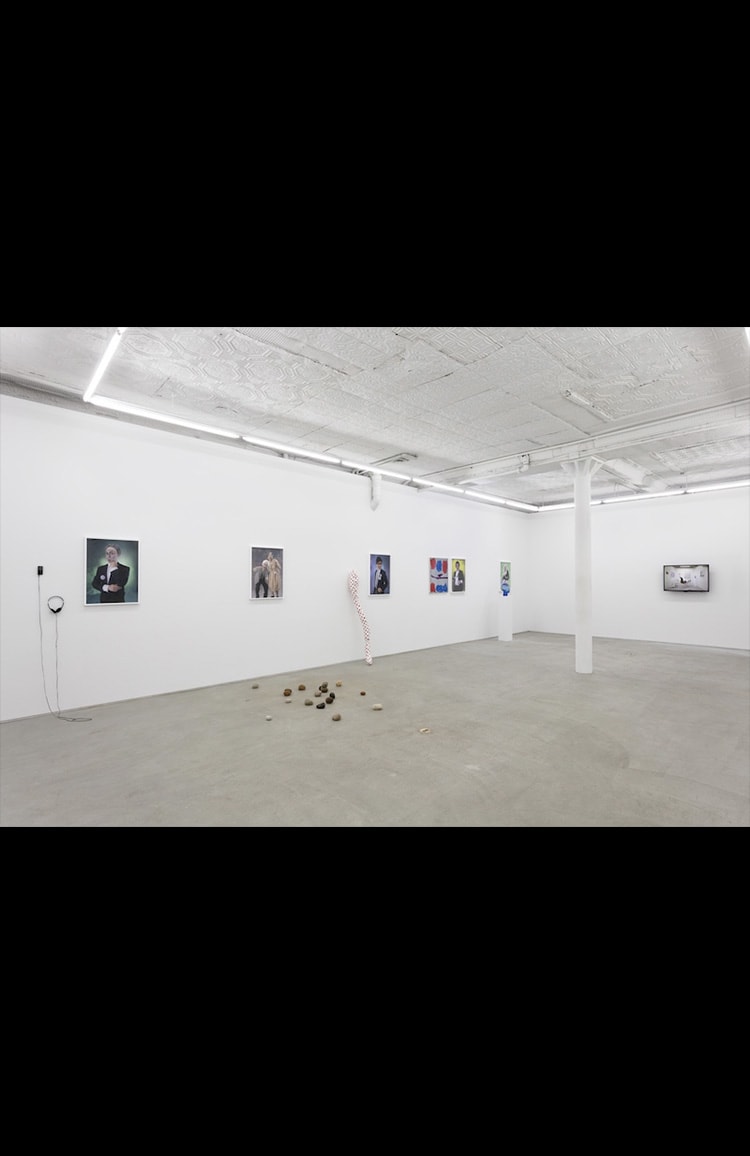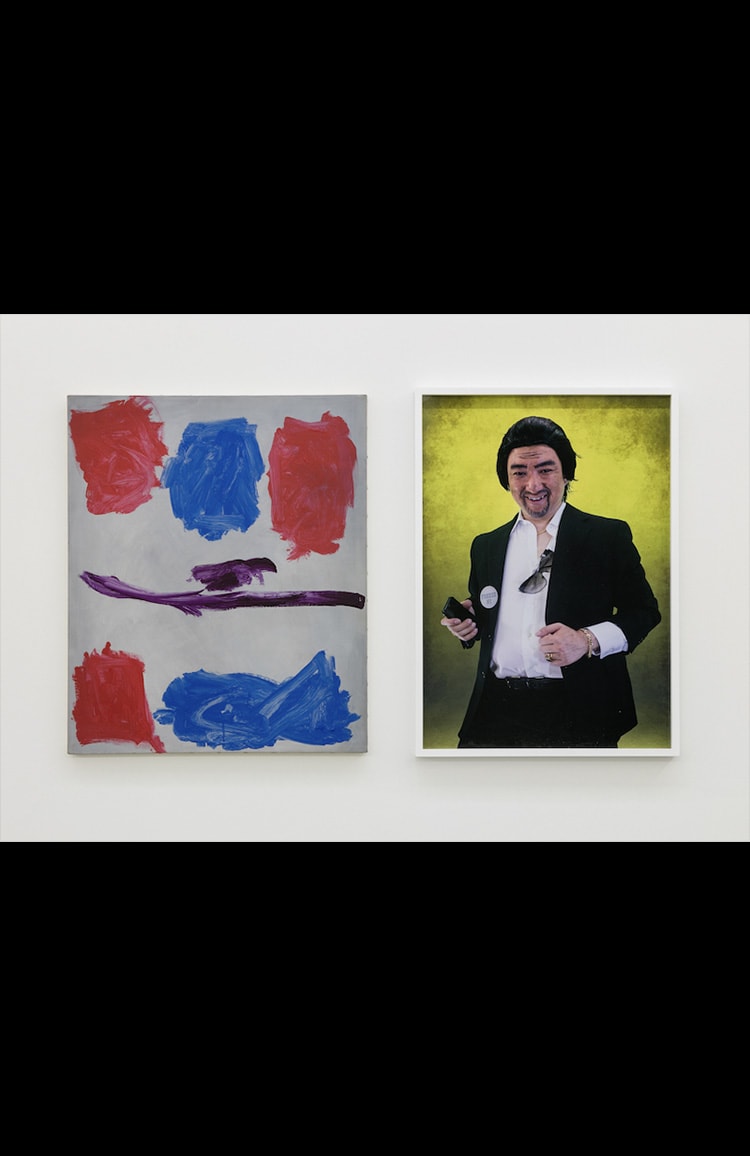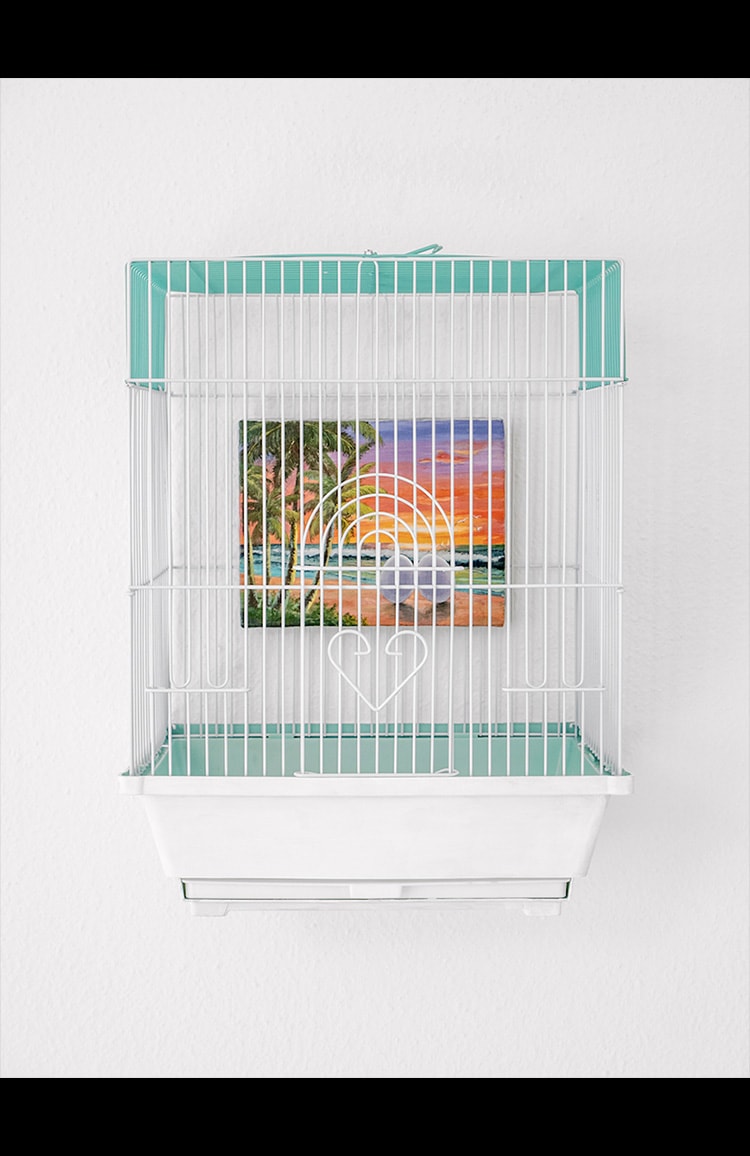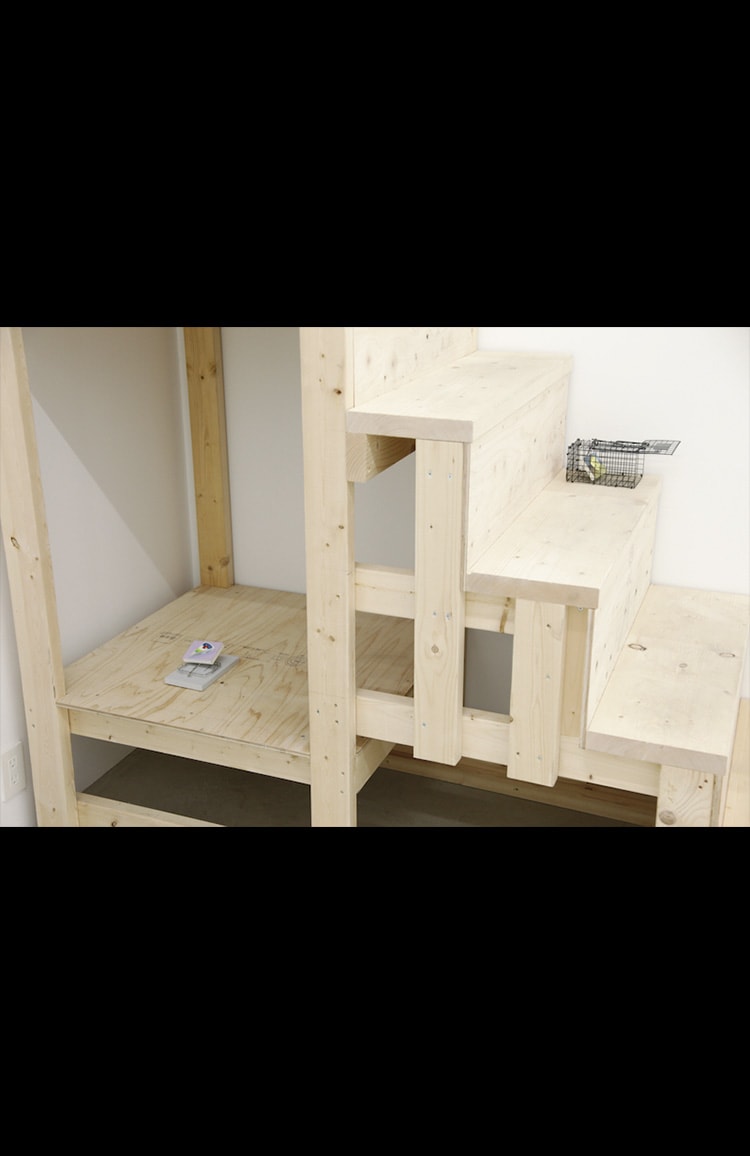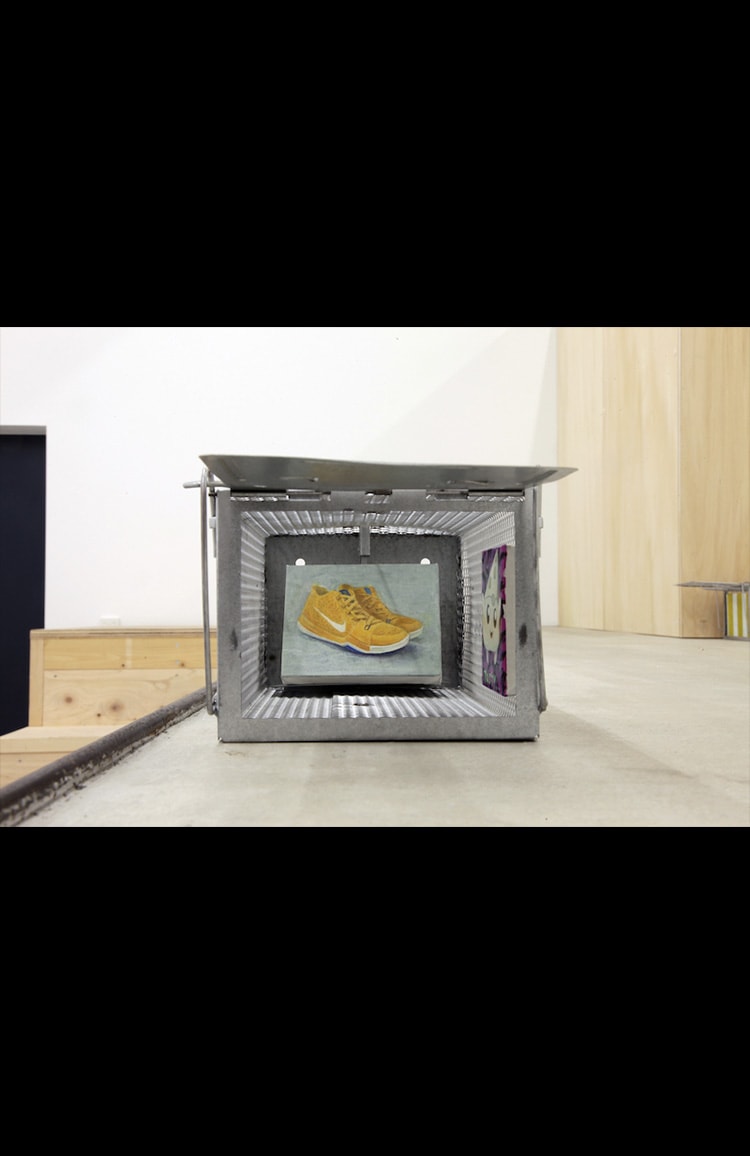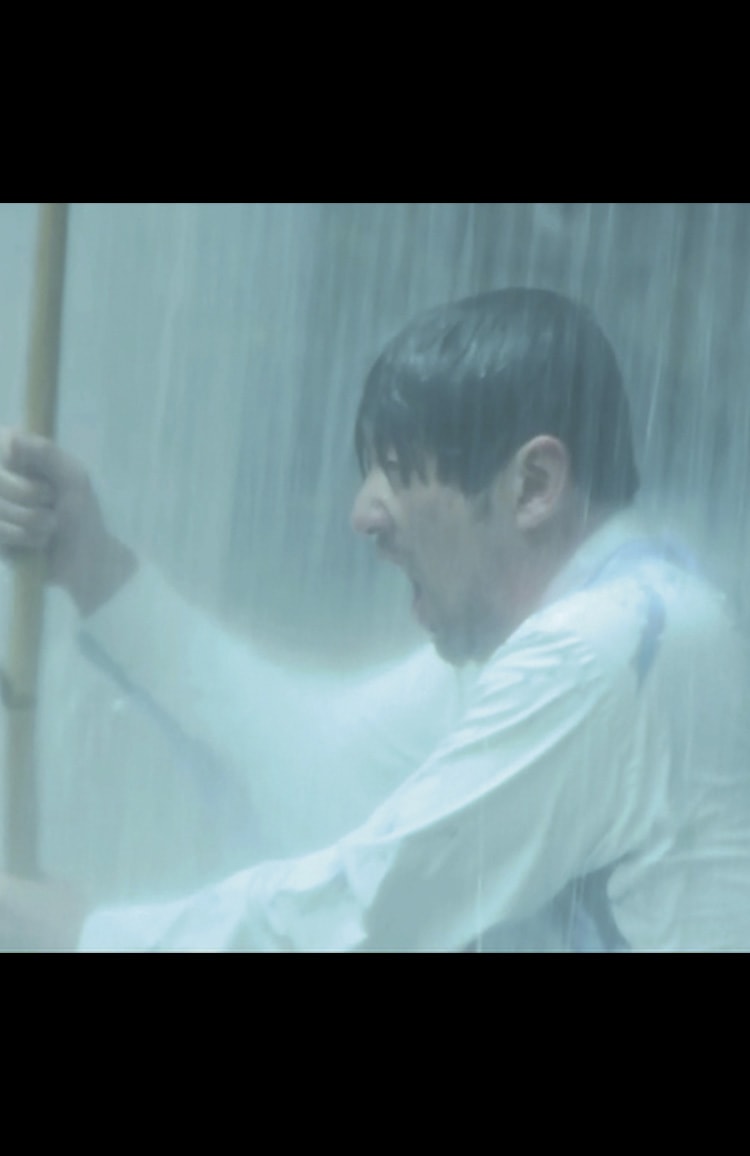IL__I see. That explains the impression I get when I look at your artworks;the characters that appear in your work lack a certain kind of performer's ego, for example, wanting to be seen as beautiful. I'm wondering if the awareness that you treat your own body as an offering is also evident in your series of work called 'The Object'.
'The Object' series consists of sculptural pieces where you used your portrait or an FRP model of your face as the dial of a clock. Is there any particular reason you decided to use the clock as a motif?
CO__To be honest, I don't really know why. I simply like clocks.
I first decided to use the clock as a motif because a few elements aligned in my mind: For example, the concept of time as such a vital part of physical performances, as well as the humorous approach of using a portrait as the dial of a clock and presenting it as a sculptural piece.
'The Object' series itself is a very simple work, but it makes so much sense to me. The moment I came up with the idea I felt a spark and I knew right away that I had to turn it into a piece of art.
I've always been an obsessive collector, and I particularly like to collect things that I don't understand. I don't know what it is that hooks me, but I end up wanting it. There is never a set of explicit criteria for selection. I think I like clocks for the same reason. This sensibility is the thing I value most when it comes to making artwork.
IL__There is a lot of humour in your work. For example, in your 2017 solo exhibition ‘Freeze NY’ at Brennan ↦ Griffin gallery in New York, you presented a series of works where you made objects imitating masterpieces, exhibited alongside a portrait of you dressed as a celebrity. Was it your intension for satire, that is, both humour and cynicism, to be a part of this work?
CO__Yes, that was my intention. I think that series is heavily weighted towards comedy, so it's inevitable that it contains many cynical elements.
For me, my work is always based on the concept of fun or play, followed by humour, and then comedy. Usually comedies have a pre-existing structure, and it is based on the premise that there is an object to be ridiculed or satirised by society.
IL__Has it always been important for you to include elements of play and humour in your work?
CO__Yeah, I've always loved funny things. I used to do theatre when I was still at university. I was a member of a theatre company that was very comedy-oriented, and we did what you might call comedy skits.
I’ve also always been a fan of Jackie Chan. What's great about him is that he can accept every situation and react immediately. That's what I want to be; I just always want to be able to make people laugh.
IL__I suppose what you're aiming for through your work inevitably leads to humour and laughter.
CO__Because what I'm aiming for is the biggest ‘bad’ work of the century... I got that phrase from a friend of mine. Most of the circumstances of my work have been inspired by people I know. For example, my artist friend Soshiro Matsubara named me COBRA, and it was Masaya Chiba who encouraged me to become an artist or exhibit my work. Although I had been incorporating an element of humour into my work for some time before this point, Yosuke Bandai, my artist friend showed me that it was okay to want to be funny and taught me the comic timing necessary to develop my comedic style.
When Yosuke saw my work and said, "This is the biggest ‘bad’ work of the century," I felt like my eyes were finally opened and I realized that it is actually okay to create a piece of crap. Since then, I've been trying to make the most significant piece of crap.
IL__You've been showing your painted works since 2019, among them 'Rat Museum For Rat' and 'Story of eggs (bird gallery for bird)'. I was impressed by the fact that, in both works, small paintings are placed in caged. How did you come to start the painting series?
CO__I started the painting series when I was invited to exhibit my work at an art fair. Most of the artworks you see at art fairs are paintings, so it was quite a simple decision for me to start making paintings. However, throughout the process of creating these work, I felt the same spark as I experienced when I came up with the idea of ' The Object.’
'Rat Museum For Rat' is the first painted work I showed. I saw a metal mousetrap at some random place, and I was really attracted to it as an object. From there, I developed it into the form of painting. Those three elements; the painting, an art fair, and a mousetrap, were successfully connected and became one piece in my mind.
When I first started working on it, I thought that putting a simple painting of a sliced cheese inside the mousetrap would be enough, but then it wasn’t sufficient to embody my initial concept. I then decided to use images of the cartoon characters SpongeBob and Tom and Jerry to evoke cheese as a painterly motif. I think the result turned out to be pretty close to my initial concept.

